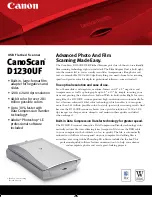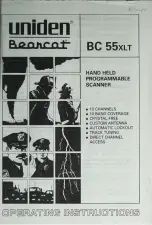
Sensitivity
Optimal sensitivity can only be achieved with a thoroughly erased screen. Close contact of
the sample with the screen will also impact the imaging sensitivity. Ensure that the sample
is pressed close to the screen surface.
6.2 Problem Solving Guide
Problem
Possible Cause
Solution
Scanner is not
responding to host
computer
•
Scanner door is open
•
Scanner is not on-line
•
USB cable is not connected
to scanner or computer
•
USB cable is defective
•
Scanner is not turned on
•
Close Door
•
Press on-line button
•
Reconnect USB cable
•
Replace USB cable
•
Turn on scanner
Image is not visible
on the monitor
•
The ‘Transform” function in
the software is set too high
•
(radioisotope only)
Insufficient exposure time
•
Area where sample was
placed was not scanned
•
Set to a lower maximum value
•
Expose sample for a longer
time
•
Check location of sample and
rescan.
(radioisotopes) When imaging
small screens ensure that the
appropriate location template is
used
Scans have image
artifacts
•
Radioactive contamination on
the phosphor surface coating
•
Static electricity on phosphor
screen
•
Phosphor screen may be
scratched or damaged
•
Contamination of sample tray
with fluorescent material
•
Imager is not level and
sample moved during scan
•
Diagonal line on a phosphor
screen image
•
Check and clean using the
protocols in this manual
•
Check and clean using the
protocols in this manual
•
Visually inspect the screen
•
Clean sample tray with Bio-Rad
cleaning solution, verify no
residual contamination by
scanning the sample tray.
•
Level imager, minimize liquid
around sample and use sample
holders to restrain sample from
moving
•
The image was obtained by
rescanning the screen.
Scans have speckled
images.
•
Dust on phosphor screen or
fluorescent sample
•
Insure powder free gloves are
used for handling screens and
samples.
34





































